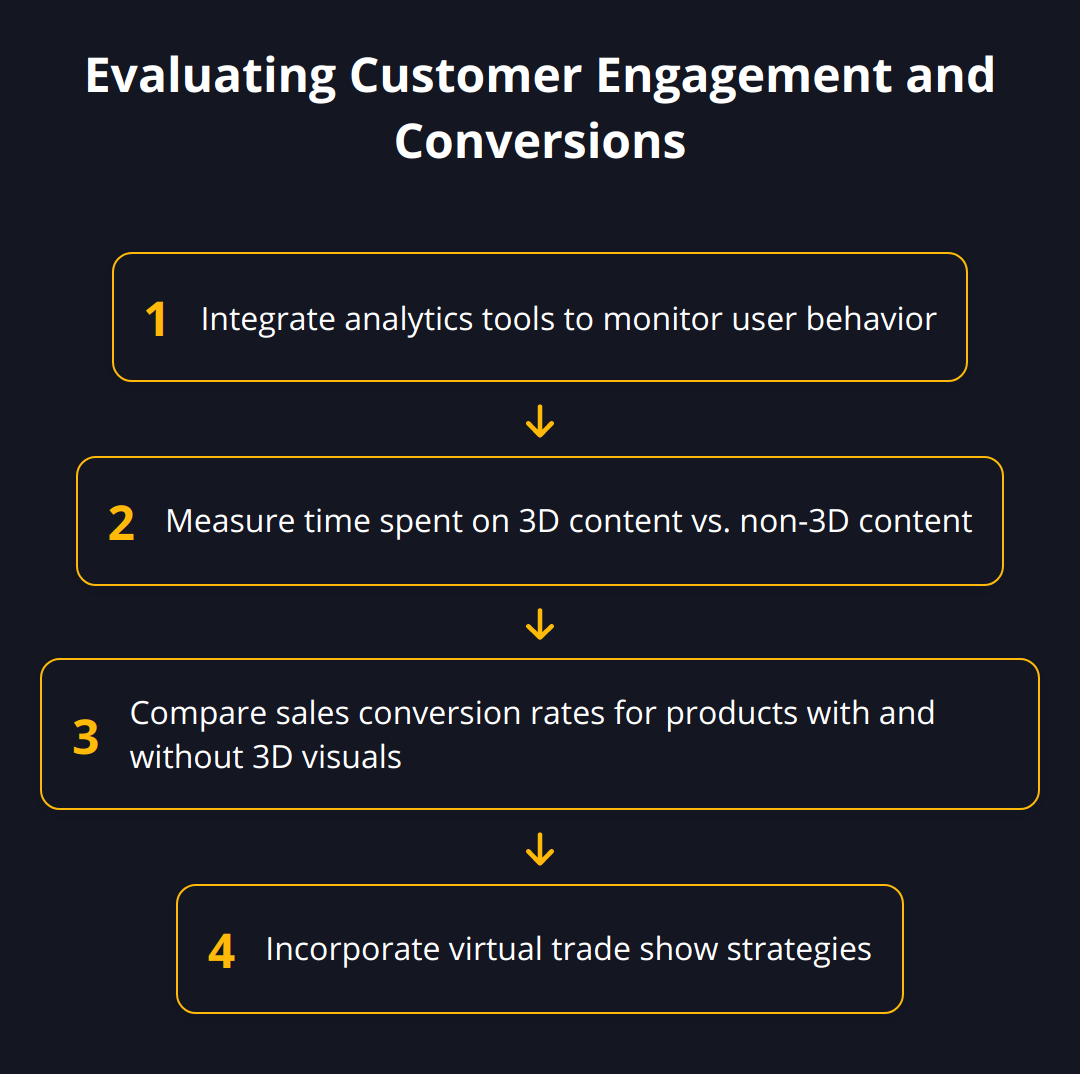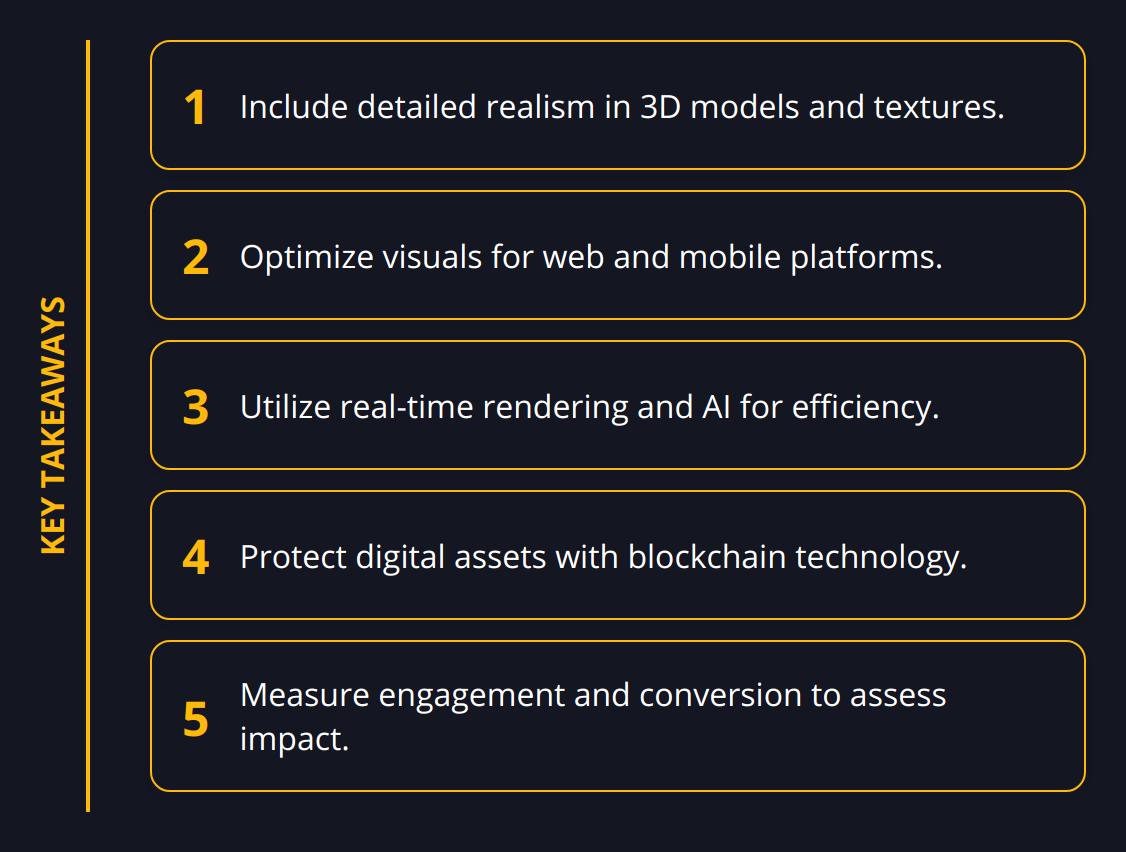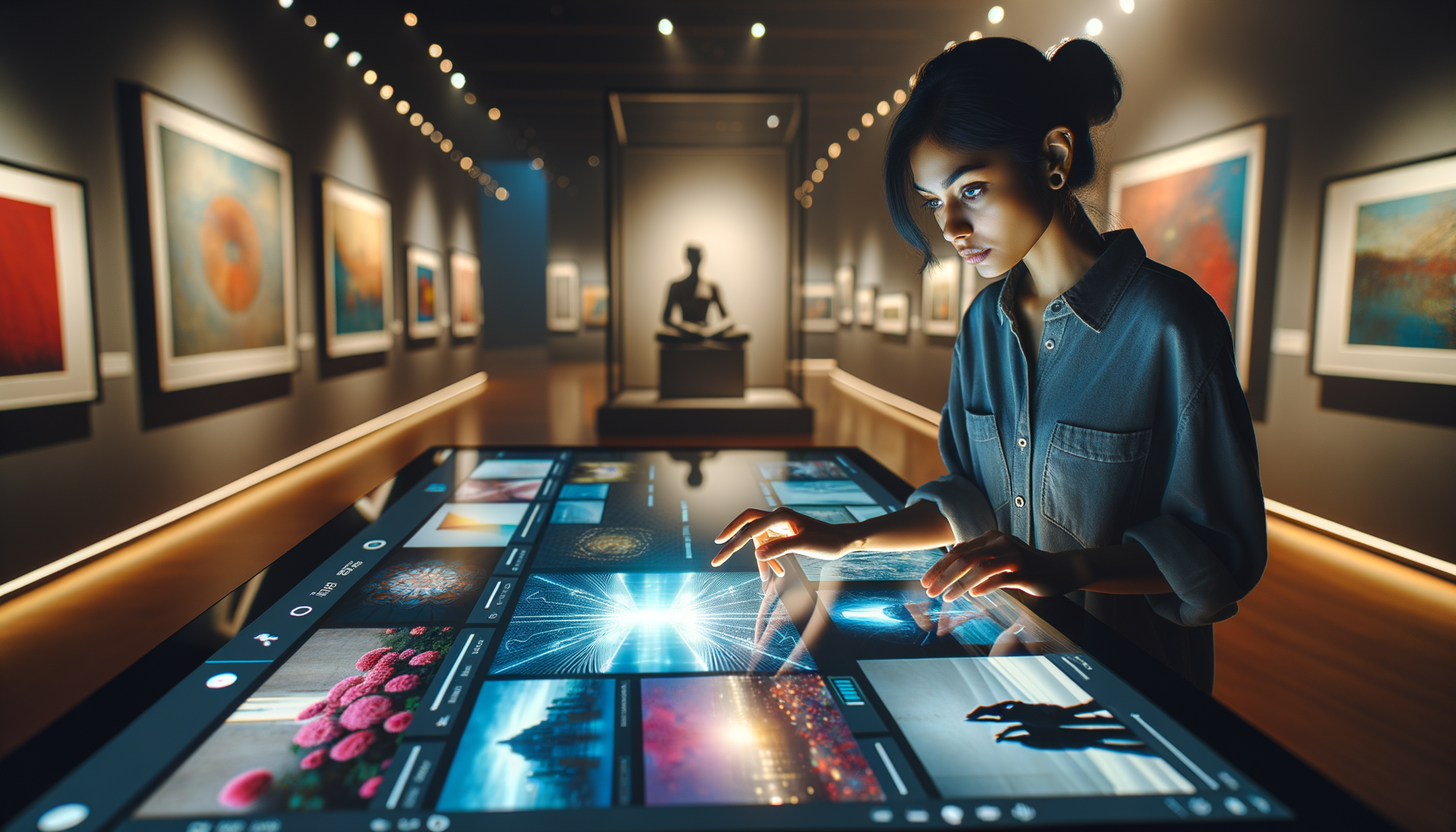We at Newroom Connect recognize the transformative power of 3D product visualization in today’s digital marketplace. It’s more than just a visual aid; it’s an essential tool for enhancing user engagement and driving sales.
Mastering best practices in 3D visualization is no longer optional—it’s a strategic imperative that can set businesses apart. In this blog post, we will provide actionable insights and cutting-edge trends to leverage 3D visualization for measurable business success.
Achieving Photorealism in 3D Visualizations
High-quality 3D visualizations can be the linchpin for a product’s market success, providing customers with immersive, lifelike experiences that boost confidence and drive purchasing decisions. To achieve photorealism that impresses and converts, here are best practices every content creator should follow.

High-Detail Models for Edge in Realism
Detail is vital. Every curve, texture, and reflection on a product can alter customer perception. A detailed model serves as the foundation for a realistic visualization. Aim to include every notch, seam, and material characteristic in your 3D model. This investment in detailing helps to create a faithful representation of the actual product. This attention to detail can significantly shorten the customer’s journey from discovery to decision, as evidence shows detailed visuals increase customer engagement.

Artful Lighting and Texturing to Set the Mood
Lighting and texturing dictate how your product is presented and perceived. Both need to highlight the best features while maintaining an authentic feel. Opt for lighting that mimics real-world sources and conditions. Soft shadows and subtle highlights can elevate a 3D visualization from looking flat to feeling tangible.
Textures contribute to tactile experience, even digitally. Ensure they are high-resolution and contextually appropriate because inadequate texturing can break the illusion of reality. By leveraging virtual showrooms, one can see the dramatic impact of strategic lighting and texturing on customer experience.
Precise Rendering for Heightened Realism
In rendering, there is no room for compromise. Utilize technologically advanced rendering engines that can simulate light behavior accurately. Realism is heightened when reflections and refractions are indistinguishable from those seen in the physical world. Rendering software that supports features like ray tracing or photon mapping is essential for near-perfect light simulation.
For added realism, incorporate renderings that account for the human eye’s limitations. It’s not always about flawless details but about representing how a person would actually see the product in a real environment. An accurately lit and textured scene can fall short without the corresponding high-fidelity rendering treatment, as this final step stitches together all previous efforts.
In closing, remember that while trends come and go, the pursuit of realism in 3D product visualization remains constant. The shift toward a more virtual shopping experience has made having top-notch 3D visuals more important than ever. By adhering to these practices, content creators not only keep pace with industry standards but also offer value that customers appreciate and respond to.
Tailoring 3D Visuals for Varied Platforms
In this part of our exploration into 3D product visualization, we shift our focus to the optimization of these visuals for different platforms, which is paramount in ensuring a seamless user experience across the digital landscape. The quality of 3D visuals must be consistent whether viewed on a desktop, tablet, or smartphone.
Adapting Visuals for Optimal Online Performance
A top priority is customizing visuals for web and mobile interfaces, keeping in mind that these environments demand speed and fluidity. Large, complex 3D files can slow down loading times and frustrate users. Here are actionable measures to streamline your 3D visualization:
-
Simplify the Mesh: Reduce the polygon count in your 3D models while preserving essential details. This balance is key to maintaining the visual quality without burdening the browser or app.
-
Compress Textures: Compressing textures without considerable loss of detail ensures that file sizes are minimized. Tools like Draco for mesh compression can significantly reduce file sizes.

-
Leverage Level of Detail (LOD): Implementing LOD means having multiple versions of a model at different complexities. As a user zooms in, a more detailed model loads.
-
Optimize Shaders: Custom shaders may look stunning, but they can be resource-intensive. Optimize your shaders for better performance across all devices.
Ensuring Cross-Platform Consistency
Achieving cross-platform compatibility can be tricky. However, using universally supported file formats like glTF can simplify the task. glTF is favored for its balance of quality and performance, making it a wise choice for web and mobile 3D visuals.
Managing Load Times and Efficient Streaming
Managing file sizes and load times isn’t just about compression; it’s also about smart loading strategies such as:
<>
-
Asynchronous loading: Load the basic structure first and then enhance with detailed textures and elements progressively.
-
Use Caching Wisely: Strategically cache assets to avoid reloading them with each session.
By respecting these optimization strategies, businesses are able to present 3D product visuals that are not only stunning but also easily accessible, regardless of the platform. The end goal is clear – create visuals that load quickly and perform flawlessly, heightening the user’s digital experience.
As we continue to navigate the intricacies of 3D visualization, remember that adaptation for platform-specific peculiarities is just as important as creating the initial visual itself. It’s not just about making a one-size-fits-all visualization; it’s about tailoring each experience to fit the medium through which it’s being accessed. Keep in mind that each subsequent step builds upon the last, ensuring that your 3D product visualization maintains its impact across the digital spectrum.
Harnessing Rendering Innovations
The digital era’s demand for ultra-realistic 3D product visualization has led to significant advancements in rendering technologies. We’re witnessing an evolution where real-time rendering and AI integration into visualization workflows are no longer a vision of the future but a reality transforming the present.
Real-Time Rendering: A Game Changer
In the past, high-quality renderings were time-consuming, often taking hours to produce a single image. Now, real-time rendering capabilities allow designers to seamlessly interact with their creations, making immediate adjustments and viewing results without delay. This innovation fundamentally changes the review and revision process, making it more efficient.
AI and Machine Learning in Rendering
The incorporation of AI and machine learning into rendering engines is revolutionizing product visualization. AI algorithms are being trained to predict and replicate complex lighting scenarios, helping to create more lifelike textures and materials. The result is quicker turnaround times with visibly superior outputs. With these advancements, we’re able to offer clients breathtaking visuals with a level of efficiency previously deemed impossible.

Augmented and Virtual Reality’s Role in Visualization
Moving beyond static images, the integration of augmented reality (AR) and virtual reality (VR) technology creates an unparalleled level of interaction with a product. AR and VR enable potential customers to experience a product in their own space or immerse themselves completely in a virtual environment. This isn’t just a way to view a product—it’s a way to experience it before making a purchase. Platforms like virtual fairs are already showcasing how VR can bring trade shows into the digital age.
Blockchain for Secure Rendering Transactions
When it comes to protecting the integrity of these visual assets, blockchain technology offers a solution. Using blockchain to secure rendering processes ensures that every step—from initial design to final visualization—is recorded and verifiable. This transparency is vital for establishing trust in a digital world where intellectual property must be safeguarded.
In terms of practical advice:
-
Explore real-time rendering software to significantly reduce your product visualization time.
-
Leverage AI-powered tools to enhance realism without additional manual labor.
-
Implement AR and VR to provide a more immersive and engaging customer experience.
-
Investigate blockchain solutions to protect your digital creations and rendering workflows.
<>
With these technologies at our fingertips, content creators can deliver stunningly realistic 3D visuals swiftly and securely. Harnessing these innovations is not an option—it’s a strategic necessity to stay ahead in the market.
As we keep pushing boundaries, it’s clear that the future of product visualization lies in these advanced technologies. They are not just improving existing methodologies but creating entirely new possibilities for customer interaction and product representation.
Gauging 3D Visualization Success
Evaluating the success of 3D product visualization is key to understanding its impact on business objectives. Rather than relying on assumptions, businesses must track concrete metrics to determine the effectiveness of their visual content. Let’s explore the strategies that turn 3D visualization into an undeniable asset for growth.
Customer Engagement and Conversions
Firstly, customer engagement is a primary indicator of how well a 3D visualization is performing. You want to ensure that users are not just visiting but interacting with your 3D content. By integrating analytics tools, you can monitor user behavior such as time spent on pages with 3D visuals versus those without. A notable increase in dwell time signals that your visuals are captivating.
Conversions, however, are where the true value of 3D visualizations becomes evident. Measure the sales conversion rates for products with 3D visuals in comparison to those without. A boost in sales attributed to 3D visuals isn’t just anecdotal; it reflects directly on your bottom line. Incorporating virtual trade show strategies into your online presence can amplify these effects by providing a holistic digital experience.

Tackling Return Rates
Another practical metric is the reduction in product return rates. High return rates often indicate a disconnect between customer expectations and the actual product. If 3D visualizations accurately represent products, customers are less likely to be surprised upon delivery. You can track this by comparing return rates before and after implementing high-quality 3D visuals. Significant reductions translate to satisfied customers and lower operational costs.
Cost-Benefit Analysis
Lastly, conducting a thorough cost-benefit analysis is crucial for aligning 3D visualization with your long-term business strategy. Start by assessing the initial costs of creating 3D visuals against the incremental gains in engagement, conversions, and reduced returns. Remember, it’s not just about immediate returns but also about brand perception and market standing. The benefits often extend beyond direct sales, contributing to a stronger brand that commands customer loyalty.
Keep these measurable outcomes in mind:
-
Enhanced interactive and visual experiences tend to lead to longer session times and deeper customer engagement.
-
Visuals that allow for close-up inspection and from multiple angles can reduce hesitation, guiding users toward a purchase.
-
Transparent representations of your products can lower return rates, ultimately saving on reverse logistics costs.
Consider these key operational metrics as part of your strategy to grasp the true value of 3D visualization. It’s no longer enough to create stunning visuals; you must tie them to measurable outcomes to justify the investment and drive your business forward.
Wrapping Up
Reflecting on the strategies and insights shared, we’ve explored the meticulous craft of 3D product visualization and its undeniable impact on business success. Consolidating our discussion, it’s evident that the benefits of deploying high-quality 3D visuals can be monumental for any brand.

Achieving lifelike realism through detailed modeling, precise lighting, and advanced rendering reflects a brand’s commitment to quality and innovation. These visuals, when thoughtfully created and displayed, can form the cornerstone of user engagement and conversion enhancement. The optimization of these visuals for web and mobile is essential to delivering a fluid customer experience that aligns with today’s digital standards.
Embracing cutting-edge technologies like real-time rendering and AI not only streamlines the creation process but also propels businesses towards a future where immersive user experiences are expected. Moreover, embedding AR and VR functionalities offers customers a compelling reason to choose one product over another.
We at Newroom Connect stand at the forefront of this digital transformation, empowering our clients to excite, engage, and convert audiences with bespoke virtual environments. Our platforms—from virtual trade fairs to virtual showrooms—are designed to seamlessly integrate into your business strategy, providing innovative spaces for showcasing products, training staff, or conducting events.
Understanding that 3D product visualization extends beyond mere aesthetics to tangible business outcomes is fundamental. Regularly assessing key metrics such as engagement, conversion rates, and return rates is vital to ensure that visualization efforts reap the rewards they are capable of.
Here are pivotal best practices we recommend keeping at the forefront:
-
Strive for photorealism with detailed models and sophisticated texturing.
-
Customize for cross-platform consistency to ensure optimal loading times.
-
Leverage the latest advancements in real-time rendering and AI.
-
Protect your visuals and workflows with secure and transparent technologies like blockchain.
-
Analyze success through engagement metrics and cost-benefit comparisons.
Maintaining a competitive edge means not only adopting the latest in 3D visualization but also continually anticipating and preparing for the next wave of innovation. For businesses looking to make their mark and elevate their digital presence, mastering 3D product visualization is an investment that clearly translates into enhanced business value.
With the digital horizon expanding each day, partnering with experts who can deliver exceptional virtual spaces is more important than ever. We invite you to discover how Newroom Connect can transform your approach to digital engagement and help you captivate your audience like never before. Join us to unveil a new era of digital interaction and innovation.
In conclusion, the judicious use of 3D visualization is more than a trend; it’s a vital element of modern business strategy. It’s an avenue for brands to articulate their stories and a means for customers to embark on a journey of discovery. Don’t just present your products, make them unforgettable experiences that resonate long after the screen is turned off.


